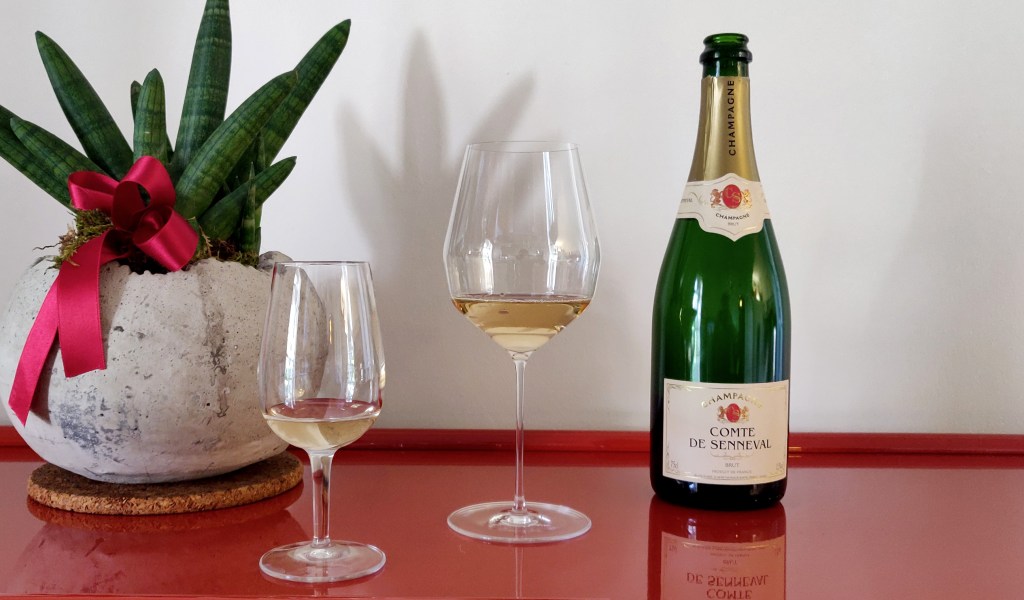This article originally appeared on VICE Italy.
Despite the drink’s luxurious reputation, not all champagne is good champagne. As an amateur wine connoisseur (as unbearable as that sounds), I know a couple of things about champagne – for instance, that it’s not supposed to cost €13.99 (£12.99), the price of LIDL’s Comte de Senneval.
Videos by VICE
Usually, the cheap champagnes you find in supermarkets are entry-level labels of the big Maisons – Moet Chandon, Mumm, Veuve Clicquot – priced between €22 (£18.85) and €30 (£25). Bottles made by small producers, the so-called Récoltant-manipulant (harvester-handlers), are usually only available in wine shops, with prices starting from about €30. But in recent years, low-cost supermarket giants ALDI and LIDL have entered the venerated world of Champagne production, with both pricing their fizz below even the cheapest competition. ALDI’s Monsigny Champagne, also priced at €13.99, has garnered plenty of hype and awards, but LIDL’s offering tends to edge it out when experts and amateurs put the two head-to-head.
LIDL’s label may say “Comte de Senneval”, but there is no producer by that name. It’s actually made by Maison Burtin, a fancy champagne house that’s part of the Lanson-Bcc group, which includes some of the most well-known champagne brands. Maybe the Maison didn’t want their name associated with the discount supermarket, maybe LIDL just wanted a fancier-sounding label. In any case, the product is simply marked “MA” (Marque Auxiliaire) and sold only at LIDL. The producers use a classic mix of three grapes typical of the region: pinot noir, pinot meunier and chardonnay. In short, it seems pretty legit.

I decided to put the wine to the test, recruiting a few friends for a blind tasting. I served them the Comte de Senneval in fancy tasting glasses, so as not to attract suspicion. The bottle is easy to open and, when poured, produces a lot of bubbles – a good sign. The colour has a beautiful golden-pink tinge, which means a lot of black grapes were used in the blend. The smell is pretty neutral, with hints of strawberry and bread crust (the bready smell is good, as it means the wine was brewed with a yeast specially selected for it). The first sips were not unpleasant – a bit on the sugary side, but no one turned up their noses.
The second glass, however, had issues. As soon as it heats up a little, the Comte de Senneval definitely gets worse. It’s not as bubbly, and the taste becomes dense and overly sweet. Without going into technicalities, let’s just say it reminded me of low-fat strawberry yoghurt. With bubbles. The wine’s sugar content is clearly trying to mask some of its flaws, but it can only do so when the drink is very cold.

Since the first glass was so different from the second, I decided to re-cork the bottle and give it a try the next day, to test if it tasted even worse. Once it comes into contact with air, wine begins oxidising, a process that changes its flavour.
The following day, I switched things up and poured it in a narrower glass. The drink definitely benefits from less contact with oxygen once it’s out of the bottle. The narrow opening helped the bubbles disperse less and preserved the flavours.
My verdict is: yes, it’s drinkable – although don’t expect to impress any enthusiasts with it. At that price point, you can easily find a better prosecco if you’re looking for something sparkly. But if you like the idea of drinking champagne on a beer budget, this will be fine. Serve it cold, keep it on ice and use a flute glass instead of a generic wine glass – it’ll make all the difference.






